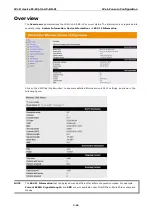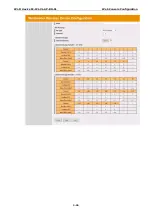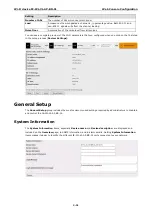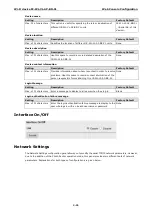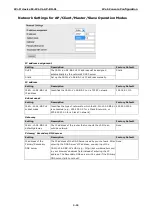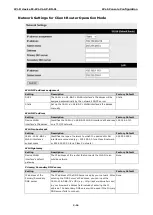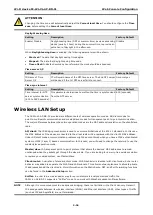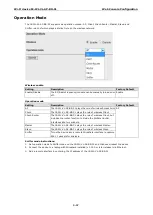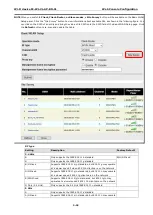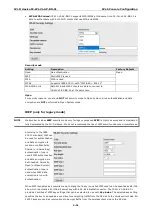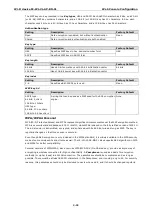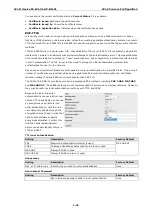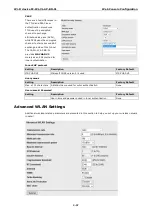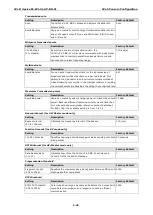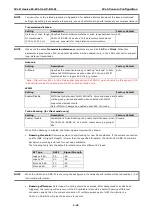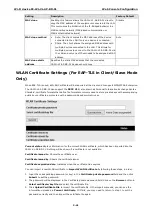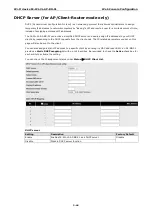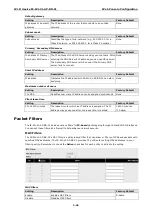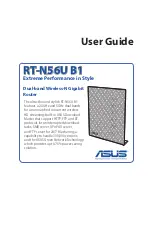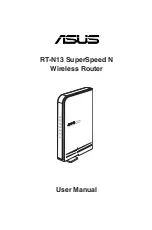
Wi-Fi device IE-WL-VL-AP-BR-CL
Web Console Configuration
3-32
The WEP key can be presented in two
Key types
, HEX and ASCII. Each ASCII character has 8 bits, so a 40-bit
(or 64-bit) WEP key contains 5 characters, and a 104-bit (or 128-bit) key has 13 characters. In hex, each
character uses 4 bits, so a 40-bit key has 10 hex characters, and a 128-bit key has 26 characters.
Authentication type
Setting
Description
Factory Default
Open
Data encryption is enabled, but without authentication
Open
Shared
Data encryption and authentication are both enabled.
Key type
Setting
Description
Factory Default
HEX
Specifies WEP keys in hex-decimal number form
HEX
ASCII
Specifies WEP keys in ASCII form
Key length
Setting
Description
Factory Default
64 bits
Uses 40-bit secret keys with 24-bit initialization vector
64 bits
128 bits
Uses 104-bit secret key with 24-bit initialization vector
Key index
Setting
Description
Factory Default
1-4
Specifies which WEP key is used
Open
WEP key 1-4
Setting
Description
Factory Default
ASCII type:
64 bits: 5 chars
128 bits: 13chars
HEX type:
64 bits: 10 hex chars
128 bits: 26 hex chars
A string that can be used as a WEP seed for the RC4 encryption
engine.
None
WPA/WPA2-Personal
WPA (Wi-Fi Protected Access) and WPA2 represent significant improvements over the WEP encryption method.
WPA is a security standard based on 802.11i draft 3, while WPA2 is based on the fully ratified version of 802.11i.
The initial vector is transmitted, encrypted, and enhanced with its 48 bits, twice as long as WEP. The key is
regularly changed so that true session is secured.
Even though AES encryption is only included in the WPA2 standard, it is widely available in the WPA security
mode of some wireless APs and clients as well. The IE-WL-VL-AP-BR-CL also supports AES algorithms in WPA
and WPA2 for better compatibility.
Personal versions of WPA/WPA2, also known as WPA/WPA-PSK (
Pre-Shared Key
), provide a simple way of
encrypting a wireless connection for high confidentiality. A
Passphrase
is used as a basis for encryption
methods (or cipher types) in a WLAN connection. The passphrases should be complicated and as long as
possible. There must be at least 8 ASCII characters in the Passphrase, and it could go up to 63. For security
reasons, this passphrase should only be disclosed to users who need it, and it should be changed regularly.

